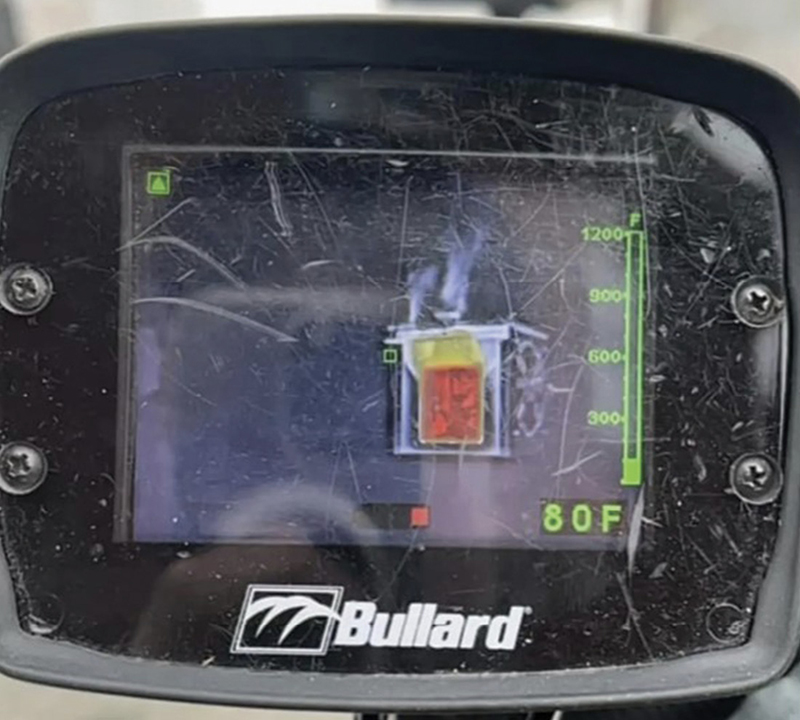
Durability in the fire service refers to the ability of firefighting equipment, gear, and clothing to withstand the harsh conditions and physical demands of firefighting operations. This includes exposure to extreme heat, flames, smoke, water, and other hazardous materials.
Durability is crucial in ensuring firefighters’ safety and effectiveness in the line of duty. It is important for all equipment to withstand these conditions and continue to function properly to protect firefighters and help them perform their duties effectively.
Thermal imager (TI) durability in the fire service is crucial, as TIs play a key role in aiding firefighters in search and rescue operations, locating hot spots, assessing fire conditions, and making critical decisions during firefighting operations. TIs are designed to withstand the extreme conditions firefighters encounter, including high heat, smoke, water, impacts, and rugged handling.
National Fire Protection Association (NFPA) 1801, Standard on Thermal Imagers for the Fire Service (2021 ed.), section 8.13 Durability Test, outlines all the requirements NFPA-compliant TIs have to pass.
To break it down in simplified terms, here are some of the key aspects that contribute to TI durability in the fire service.
Robust Construction: TIs are typically built with durable materials that can withstand impact, exposure to heat, and other harsh conditions. They are often designed to meet specific ruggedness standards to ensure they can withstand the rigors of firefighting operations. These materials can include PPSU Thermoplastic, Ultem Thermoplastic, Hi Temp Resistant Plastic, Radel R-5100, PPSU, and Polyphenylsufone.

1 A scratched display screen that can be replaced in house. (Photo courtesy of Bullard.)
IP Rating: Ingress Protection (IP) ratings indicate the level of protection a device has against dust and water. TIs for firefighting applications often have a high IP rating to ensure they remain operational in wet and dirty environments. The IP67 rating for TIs gives them the ability to be “immersed in 3 feet (1 meter) of freshwater for up to 30 minutes.”
Shock Resistance: TIs are subject to potential drops, impacts, and rough handling during firefighting operations. The devices are designed to be shock-resistant to ensure they can continue functioning even after being subjected to rough treatment. A standard drop test for TIs would be a “6-foot (2 meter) drop test with no functional damage.”
Temperature Resistance: TIs are designed to withstand high temperatures, as they are used in environments where extreme heat is present. TI components are engineered to operate effectively in these conditions without being damaged. A standard heat test for a TI would be inserting it into heat conditions of “500°F (260°C) for five minutes with no damage to electronics.”
Sealed Design: TIs are sealed to prevent dust, water, or other debris from entering the devices and causing damage to internal components. This helps ensure their reliability and longevity. For TIs that have battery compartments that open up, exercise caution to ensure that the batteries stay dry from condensation and that water and debris do not enter when opened if batteries are changed in fire conditions.
EVALUATIONS
Every TI manufacturer has detailed specifications about its products. Create your own evaluation criteria based on their information and conduct your own testing.
Live fire testing is certainly required, as all TIs perform differently than in the boardroom setting.
What is the refresh rate like? What do the image quality and colorization look like? How hot can you get the TI before anything happens to it?
Dunk it, drop it, and bake it. Do not take the word of the sales representative alone. You get what you pay for.
WARRANTIES
Add the warranties from the manufacturers to your evaluation criteria. What do they offer? What is their timeline if repairs are required, and where does the TI have to be sent? Do they offer backup TIs in case of repair delay? Does the distributor carry replacement components such as batteries, display screens, straps, etc.? What repairs can be made in the firehouse before the TI has to go back to the manufacturer? Does the manufacturer offer any sort of preventive maintenance program where the TIs can be sent back after several years of abuse and reconditioned into new condition?
Overall, TI durability in the fire service is critical to effectiveness in aiding firefighters in their operations. Fire departments must ensure that they invest in high-quality, durable TIs that can withstand the demanding conditions of firefighting environments to support the safety and efficiency of firefighters on the scene.
MANFRED KIHN is a 19-year veteran of the fire service, having served as an ambulance officer, emergency services specialist, firefighter, captain, and fire chief. He has been a member of Bullard’s Emergency Responder team since 2005 and is the company’s fire training specialist for thermal imaging technology. He is certified through the Law Enforcement Thermographers’ Association (LETA) as a thermal imaging instructor and is a recipient of the Ontario Medal for Firefighters Bravery. If you have questions about thermal imaging, e-mail him at Manfred_kihn@bullard.com.

